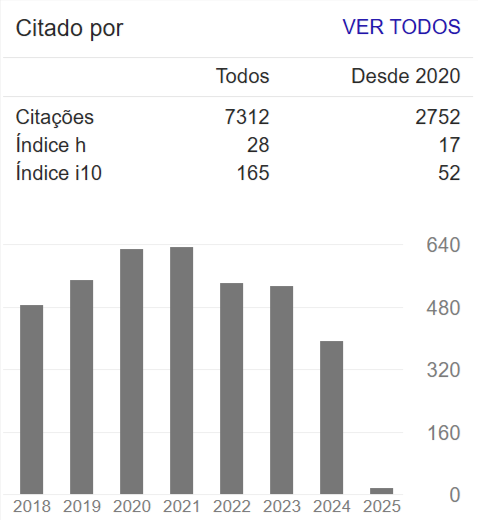Effect of the interpolation of hydrogeological data in sedimentary aquifers: a case study in the state of Paraná
Abstract
Groundwater is of great importance as a water reserve, and the use of Geographic Information Systems has been shown to be useful in understanding the occurrence and movement of this resource. The study's objective was to evaluate interpolation methods applied to hydrogeological data with the verification of the impact generated by the estimation process. The methods evaluated were the Inverse distance weighting, Triangulation and Topo to Raster, and the data considered were hydrogeological parameters of the sedimentary aquifers in the state of Paraná: Furnas, Itararé, Rio Bonito, Passa Dois, Guarani, and Caiuá. The results were evaluated according to the occurrence of positive and negative estimates, normalized root mean square, and precision of the interpolator when generating results closer to the observed values. This study showed the effect of interpolation on hydrogeological data, indicating the Inverse distance weighting was the most appropriate method for the parameters and aquifer foci of the study, as it presented smaller variations between the observed values and the estimated and lower normalized root mean values square (between 0 and 0.108). This study demonstrates the importance of choosing the appropriate method for interpreting data in non-sampled regions due to the large variations in interpolating data.

















